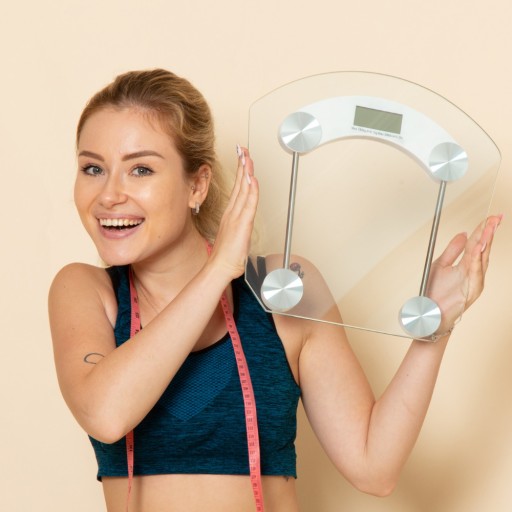Quote of Memorial
Gastric Balloon 12 Months
Weight management has become a key task in today's world for health and aesthetic reasons. Among the various methods of losing weight, the gastric balloon has emerged as one of the few minimally invasive options that is gaining favor. An overview is given in this article: what a gastric balloon is, its benefits and risks, and the procedure involved. If you're considering weight loss options or want more information, you are in the right place.
The gastric balloon is a silicone device placed inside the stomach with the help of an endoscopic intervention. The effect is achieved by catching space in the stomach-reducing its volume-so that, consequently, your ability to eat large portions of food is decreased. Thus, the gastric balloon may lead you through an easier weight loss process by helping you feel full sooner. How efficient the gastric balloon is and what indications it has-questions that often show up in every person's mind.
What is a Gastric Balloon?
A gastric balloon is a silicone device that is placed in the stomach by way of endoscopy. It is inflated inside the stomach and, quite logically, diminishes the volume of said stomach; therefore, it restricts how much one can eat and makes a person feel full sooner. This usually serves as a temporary tool for weight loss and, when used accordingly, is very effective for those at risk of obesity in which other techniques have been tried and have failed.
Risks of a Gastric Balloon
The gastric balloon, like any other medical intervention, comes with a number of risks. The common side effects could include nausea, vomiting, and abdominal pain. In rare occasions, the balloon may deflate or an obstruction could be present. Care post-procedure is vital and follow-up appointments to ensure all goes as it should, mitigating these risks.
Caring for Yourself after a Gastric Balloon
The balloon, after its placing in the stomach, might remain there for 6 to 12 months. Within this period, one needs to focus on normal intake of food and better levels of exercise in order to achieve maximum weight loss and preservation of good health. When it is eventually taken out, these healthy practice recommendations have to be continued to sustain weight loss and avoid gaining weight.
Gastric Balloon Reviews
Outcomes following the gastric balloon procedure definitely vary from person to person. Most people report positive results: a substantial weight loss and a reduction in health-related problems. Some users experience initial discomfort with the device, such as nausea or cramping. The bottom line of most reviews tends to be that even though the initial adaptation may be difficult, the results are well worth it for those who stick with the recommended life changes.
Gastric Balloon Procedure
The procedure for placing the gastric balloon is done through a method called endoscopy, where the balloon is guided into the stomach through a flexible tube with a small camera attached. The whole process is minimally invasive and generally takes less than an hour to perform; one usually can go home on the same day. In general, the procedure is safe, though it may be somewhat uncomfortable as the body adjusts to the balloon.
Who is the correct candidate for a gastric balloon?
It is usually indicated for those with a BMI of 30 upwards who have not been able to lose weight through exercise and diet. It is also ideal for persons who need to shed weight prior to undergoing other surgical procedures or those with obesity-related health complications. You will need to see a specialist for an in-depth medical consultation to figure out whether you are a good candidate for a gastric balloon.
Gastric Balloon for Weight Loss
The weight loss achieved by a gastric balloon can be quite impressive and usually ranges between 15 to 30 kgs for a period of 6 to 12 months. The general outcome of the balloon maintaining a very good weight loss is normally positive, provided the dietary recommendations are religiously followed along with regular physical activity. This is a tool that will help one achieve his or her weight loss goals, provided it is coupled with very positive lifestyle changes.
- Health Insurance
-
Accommodation
- Online Healthy Life Assistant 9/5
- Post - Experience Follow Up 6 Month
-
Extra Privileges
- Transfer

- Health Insurance
-
Accommodation
- Online Healthy Life Assistant 24/7
- Post - Experience Follow Up 1 Year
- Pre-Treatment Doctor Consultation
-
Extra Privileges
- Transfer

 Private
Private
- Health Insurance
-
Accommodation
- Healthy Life Butler
- Post - Experience Follow Up 2 Year
- World-Famous Doctor Consultation
-
Extra Privileges

* Price varies depending on extra and upgrade selections.
Gastric Balloon is suitable for candidates with a BMI between 27 and 40, and the individual should be 22 years or older.
Gastric Balloon and Gastric Sleeve are distinct procedures catering to different BMI ranges. Gastric Sleeve is reserved for individuals with a BMI of 40 or higher and involves surgery, carrying inherent surgical risks. In comparison, Gastric Balloon is considered safer with minimal complications, making it a favorable choice for those with a BMI between 27 and 40.
Patients have been shown to lose up to 47% of their excess weight in six months after the gastric balloon. This is an average and it can be more or less according to your diet, exercise and lifestyle.
The initial four weeks following a gastric balloon procedure involve a specific diet. The first two weeks focus on a clear liquid diet, followed by the gradual introduction of soft pureed foods in the subsequent two weeks. Solid foods are reintroduced afterward.
Gastric balloon treatment is generally safe, with minimal complications. Potential side effects include nausea, vomiting, stomach cramps, diarrhea, and abdominal pain. These reactions are natural responses to the presence of the balloon and often subside within a few days.
No, a gastric balloon will not burst. Although resistant to stomach acid, there is a slight risk of puncture. In the event of a rupture, the balloon is removed from the stomach.
While individuals do not feel pain during the sedated procedure, some may experience discomfort during balloon inflation. Mild discomfort lasting 3-4 days is reported by about one-third of people after balloon insertion.
The duration varies between 4-6 or 12 months, depending on the type of gastric balloon.
Gastric balloon insertion is not recommended during breastfeeding due to potential impacts on milk quantity and quality from the post-balloon diet.
Individuals typically return to daily life and work within days.




